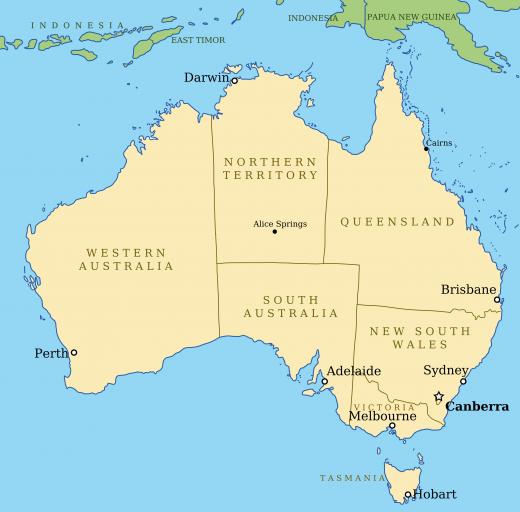At MyLawQuestions, we're committed to delivering accurate, trustworthy information. Our expert-authored content is rigorously fact-checked and sourced from credible authorities. Discover how we uphold the highest standards in providing you with reliable knowledge.
What is a Dual Court System?
A dual court system is a legal organizational structure that supports two contemporaneous court systems: usually one at a local level, and one at a national level. The United States and Australia have two of the longest-running and best-known dual court systems in the world. In each of these countries, local law is enforced in the state court system at the same time as national law is enforced in the federal court system. There is some overlap between the scope and breadth of state and national laws, but most of the time, the court systems exist entirely independent of each other.
The constitutions of both Australia and the United States set out the baseline federal law that applies to the countries as a whole. The federal court system is designed in large part to uphold and implement constitutional mandates. Each state government is also given the authority to create its own local laws for residents. Federal laws always act as a minimum standard, but states are generally free to adapt as they see fit. As such, state laws often vary from place to place, but federal laws are universally constant everywhere in the country.

In many respects, the dual court system model was designed to provide a certain degree of autonomy to local governments, while still ensuring some degree of judicial checks and balances. Both the United States and Australia are relatively large countries. Dividing up the administration of justice and delegating some responsibilities to the states is frequently viewed to be both efficient and a reflection of a diverse peoples’ diverse needs. Maintaining an overarching federal system as a part of the dual court system also ensures that no states begin legislating in excess of the federally-required standards.

Each track of the dual court system operates in a nearly identical fashion. Initial disputes are heard in trial-level courts, often also called district courts or county courts. Once appeals have been exhausted at the trial court level, disputes can progress to appellate-level review courts, where they are heard by a panel of judges or justices. Appellate court decisions can be appealed to the highest court in the system.

In Australia, these courts are known as High Courts. They are called Supreme Courts in the United States. Each state has its own supreme or high court, but the federal system has but one. These highest courts are not compelled to hear every case that is appealed to them, and usually choose only a small number of cases to hear each year.
The only time that the federal arm of the dual court system intersects with the state arm is at the supreme court level. The federal Supreme Court of the United States and the High Court of Australia can hear cases on appeal from any federal appeals court, or from any state supreme or high court. As such, while a state’s highest court may be the end of the line insofar as the state law system is concerned, those decisions can be appealed a final time to the federal Supreme Court or High Court one time more.
AS FEATURED ON:
AS FEATURED ON:














Discussion Comments
I can't imagine how anything but a dual courts system would work in the United States. There are state laws and there are federal laws, and the appropriate court systems are necessary to see those are enforced.
The system works very well, but there have been some conflicts from time to time over which law -- state or federal -- applies to a case. There is a whole body of case law covering such conflicts of law instances and it is an ever evolving field. Whether federal or state laws control in a given case is usually a cut and dried matter, but not always and it is in those rare instances when it must be determined which laws reign supreme.
Post your comments